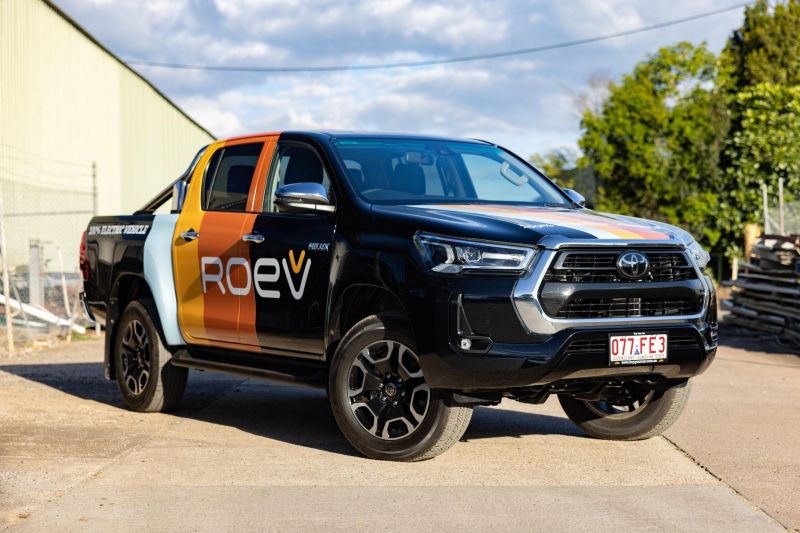An aspiring plan to form an electrical Toyota HiLux in Australia has floundered thru a rarity of investment.
ROEV, an electrical automobile and instrument startup, has been compelled to prohibit its HiLux plan upcoming operating at the challenge for greater than two years.
It were keeping cast orders for its HiLux, together with sturdy passion from mining corporations, however used to be not able to lift the $5 million to proceed into full-scale manufacturing.
ROEV is now pivoting into instrument building to monetise the methods it created to support its attainable HiLux patrons with their fleet control.
“There truly is massive demand for an electric ute. It is unbelievable,” the CEO of ROEV, Noah Wasmer, instructed CarExpert.
“We proved that, and that’s actually excellent. We additionally drew a batch of consideration to the theory of re-using cars.
-
Picture credit score: CarBon Leasing
“At some point we really do believe there will be a low-cost, efficient, safe way to convert these cars. I like to think we had a small hand in pushing some of the solutions into the market.”
ROEV were investigating a possible manufacturing web site in Melbourne however ran out of while and cash.
“At the end we were looking for about $5 million. That’s what was left to finish the program,” he stated.
“We found pretty good traction… but you still need a significant amount of private funding to build the vehicle.”
Regardless of the failure of the HiLux plan, together with some task losses at the HiLux challenge and a metamorphosis of the corporate’s location from Queensland to Sydney, Mr Wasmer stated there’s nonetheless zest at ROEV.
“We’re optimistic. We really would have liked to get the project done, but we take the positives from it and we’re getting our mission done.”
ROEV constructed a couple of HiLux prototypes and did 4 alternative electric-vehicle conversions all through its building segment however its largest good fortune used to be in instrument building.
Its equipment known alternatives for CO2 relief and electrification, in addition to insights into infrastructure necessities and effort control.
It could possibly even determine the suitable form of cars for particular person wishes, from petrol passenger automobiles to obese diesel vehicles.
“When we worked with customers early on, we found they had a lack of data about what their fleet consumed. We built a number of tools including an AI engine to give them a range of information,” he stated.
“There used to be amaze and enjoyment from shoppers. We’re roughly agnostic. We had been searching for the most productive answers.
“Ultimately we want to prove you can reduce emissions and save costs. That’s the whole goal.”




